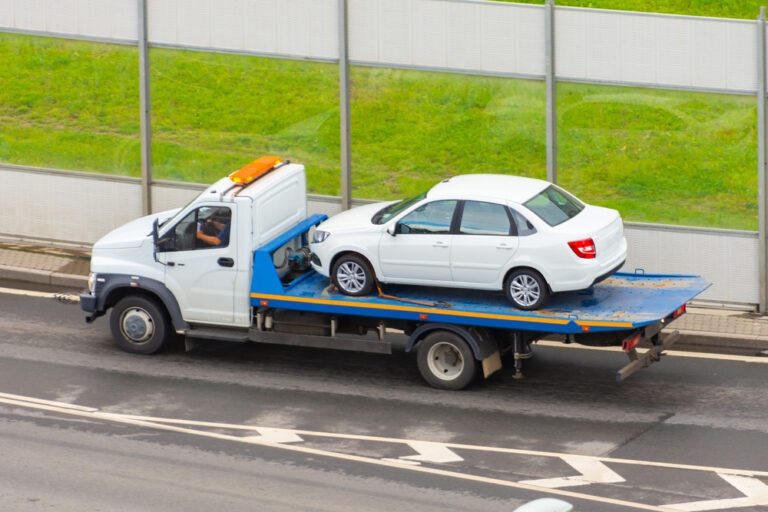
Your Guide to Classic-Car Transport
A classic car is a celebrity.
If you keep the company of such a star car—if you walk around with a vintage Mustang or T-Bird on your arm (okay, maybe this metaphor has ceased making sense)—you’re sure to turn some heads and answer a few questions, and you’ll probably spend some coin pampering that gleaming baby of yours. Fussiness, after all, is a common celebrity trait, is it not? (Here’s looking at you, Hollywood. And here we are back to wearing out the personification of your car.)
And, yet, we know many classic-car owners (maybe including you) enjoy this part of the their relationship with vehicles.
And, from our experience transporting classic cars, we know many of these same owners appreciate a company that takes great care of their vintage automobiles while shipping them.
So, whether you’re shipping because you have just sold or bought a classic car or will be showing one at a vintage-car event, this guide will help you understand more about classic-car hauling.
Two types of classic-car transportation services
It’s important to protect your investment when shipping a vintage car because, as you probably know, that antique automobile is worth a lot of money—likely many times its original sticker price, in fact.
Classic cars that have a market, according to findandfundmycar.com, are those that are increasingly rare, have unique features or cool designs, and hold nostalgic appeal. That last one is big; where there’s nostalgia there’s usually money, according to findandfundmycar.com.
While it may be argued that not all old cars are classics, the truth is that the vast majority of them are.
According to most car-insurance brokers, old cars fall into one of three basic categories:
- Vintage, if manufactured between 1919 and 1930
- Antique, if manufactured before 1975
- Classic, if manufactured before 1990
Among the pricier vintage cars are:
- Ferrari 250 GT SWB California Spider, which tops out at $18.5 million;
- Alfa Romeo 8C 2900B Lungo, at $19.8 million;
- Jaguar D-Type, at $2.7 million; and
- Mercedes-Benz W196, at $29.6 million.
Given numbers like those, it’s easy to see why owners of vintage, antique, or classic cars want to take great care of them.
We can help with that.
Open classic-car shipping
When shipping that antique car, you basically have two options: open or enclosed transport.
As the name implies, an open car carrier is open on all sides. (Picture one of those trucks full of new cars you see on the highway. Those are open-air carriers; you know this because you can see the cars.) Open classic-car shipping is usually more economical than the enclosed variety, but it offers less protection for your vehicle. Here, at a glance, are the advantages and disadvantages of open-air shipping:
- Pros:
- cost-effective and fuel-efficient
- allows easy inspection of the vehicle by the owner
- Con:
does not provide protection from dirt, debris, or elements.
Our open trailers come in various sizes and styles, so we can ship as many cars at a time as you want. And ShipLux’s Premium Service guarantees superior handling and safety of your car during the transport process.
Enclosed classic-car shipping
Enclosed shipping is safer for your car. In this scenario, your classic car is loaded into an enclosed trailer and secured and the outer door is locked and sealed.
Here are the pros and cons of enclosed shipping:
Pros:
- protects car from dirt, debris, and the elements
- provides maximum security
Cons:
- usually more expensive
- precludes routine checks during transportation
While both methods are effective, open transport is ideal for vintage cars meant to be repaired or restored.
In contrast, enclosed hauling is better for classic cars in perfect condition.
Preparing your car for shipping
Here are some of the things you should do to prepare your vintage car for shipping:
Ensure the car has some gas in the tank
Though ShipLux transporters don’t drive a car much during transportation, you still should ensure it has at least some gas in the tank so it can be loaded and unloaded onto the truck. We recommend a quarter of a tank.
We know, we know—gas costs a lot today. But your peace of mind is worth more. You should be able to relax or deal with other concerns while your car is being shipped, not worry about whether those moving it won’t be able to drive it off the truck because it’s out of juice.
Inspect the vehicle
You can do this or have your mechanic do it for you; just be sure the car can be driven before you give it over to be shipped. Among the things to check are:
- Tire pressure
Inflate the tires if they are flat.
- Mileage
Make a note of this both before and after transport.
- Battery
Make sure it’s charged.
- Fluids
Are there any leaks? Is everything filled to the proper level?
Remove personal belongings
Most classic-car transportation services do not allow you to leave personal belongings in your car.
The three main reasons for this are:
- Safety
Extra items in the car could cause the load to shift in transit or during loading or unloading the trailer and cause damage to the car.
- License and insurance
Typically the car transport carrier is not licensed to transport household goods. Carriers risk fines for transporting any personal possessions. In addition, the carrier’s insurance typically does not cover the loss or damage of personal possessions included in a vehicle being shipped.
- Weight
Car transporters have strict limits on the weight of loaded trucks and trailers. The additional, unexpected weight of personal belongings could cause carriers to be overweight. In this situation, the carrier has to make a choice to drive overweight (risking fines and significant delays) or not take the vehicle.
Make a spare key for the driver
Make sure the transport driver has a key to your car, and make sure it’s a spare. The original key should stay with you in case the spare is lost.
Because here’s the thing with keys: They are notorious for getting lost. They’re like socks in the wash. So, here’s a tip: For every separate key you have, spare or original, buy at least a cheap key chain with a bit of bulk to it and put the key on it. This makes the key harder to lose.
Your socks we can’t help you with.
Take pictures of and clean the car
Clean your car before the transport company comes to pick it up. After cleaning it, give the car a thorough inspection. Check for bumps, dents, patches of discoloration, and scratches.
Then take pictures of the vehicle—especially photos that are up close and have a time stamp. In particular, be sure to get shots of the doors, headlights, bumpers, windows, and interior.
If there is damage during transportation, you can use these pictures as evidence that the car left you in better shape than it was delivered to you.
Choose ShipLux for classic-car shipping
Vintage cars demand a shipping service that specializes in the transport of luxury cars. Wherever you want your car delivered, ShipLux has you covered. If you’re in the market for a classic-car transportation service, look no further than ShipLux. We provide high-quality open and enclosed car-shipping services for all types of vehicles. Wherever you want your car picked up or delivered, you can relax knowing it’s in good hands.
Contact us or chat with one of our agents today to learn more about our classic-car transportation services and rates.
We know how to indulge fussy celebrities.
Recent post

General Shipping Information
Debunking Common Vehicle Transport ...

Car Shipping